Dogs truly are amazing creatures – especially the pups over at Medical Detection Dogs! They use their noses to sniff out anything from cancer to diabetes to allergens such as peanuts, helping their clients live a normal, active lifestyle. The team are now training a team of six dogs who they hope will be able to detect the COVID-19 virus using only their noses! We’ve spoken to Chris Allen, Dog Supply and Socialising Training Manager at Medical Detection Dogs, all about the research, and how they plan to use dogs to help detect COVID-19!
When did Medical Detection Dogs realise the potential to detect COVID-19?
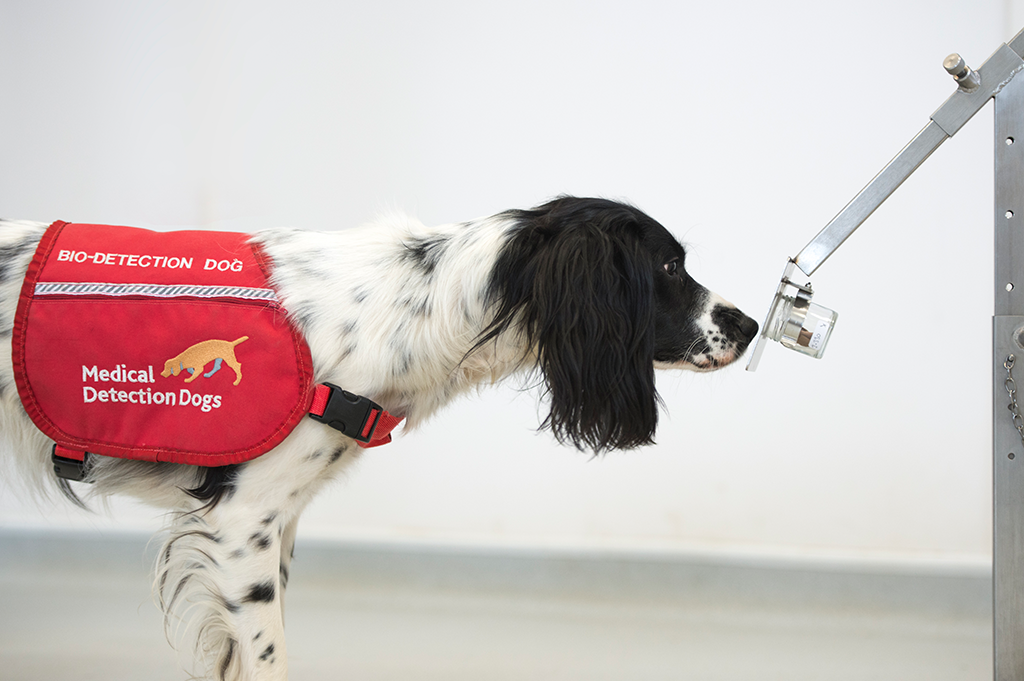
Throughout the years, the Medical Detection Dogs team have provided studies on dogs alerting to life-threatening conditions like malaria, Parkinson’s, and different types of cancers. “Through our malaria work, we knew that there was something there,” explained Chris.
“We believed our dogs could be trained to detect COVID-19 if it has an odour. And that’s where we are at the moment!” Medical Detection Dogs are currently testing the eligibility of their dogs to detect the virus. “Our research and experience gave us the confidence to look into this as early as January. That’s when we started to talk to our collaborators who we’ve worked with for many years at the London School of Hygiene and Tropical Medicine.”
The two organisations have worked collaboratively in the past on malaria studies. “It was an instant yes for us to pair up with them, work with them and use their skill and knowledge in that area. Then we were lucky that Durham University came on board as well. As a three-way collaboration, we knew we had all the expertise in all the different areas to look into the viability of using our dogs to detect COVID-19, to see whether or not it would be possible.”
The COVID-19 detection dogs
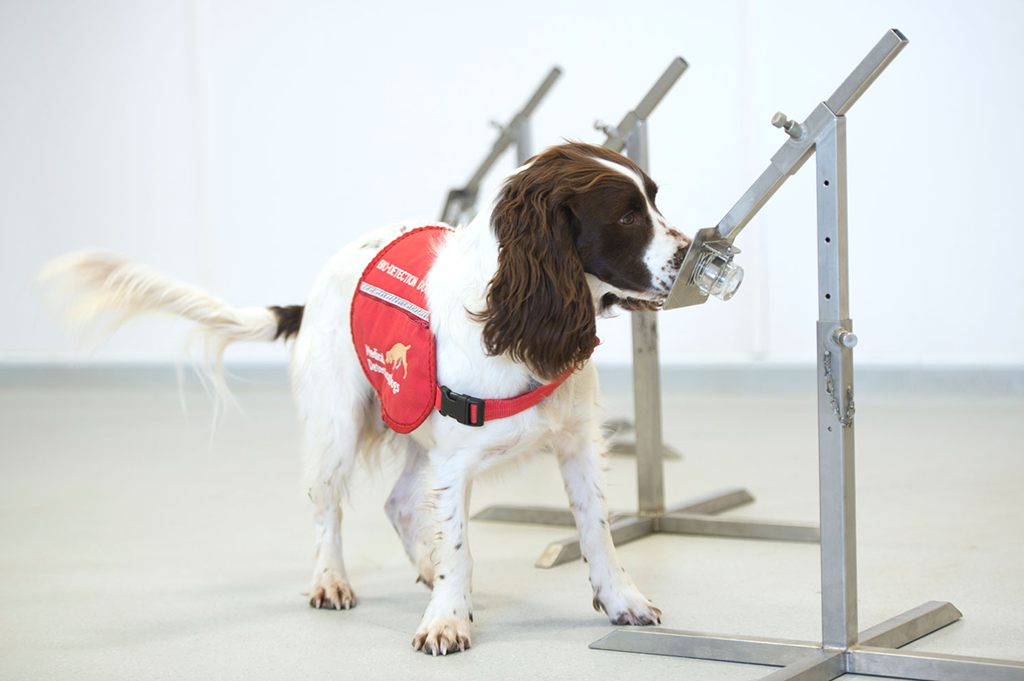
“The Super Six, bless them. They’ve got a lot of publicity, and there’s a lot of people out there who have got their favourites! Whether that’s the little Spaniel, Norman, the Labradoodle Digby, or Strom, the Golden Retriever cross Labrador. Everyone has their personal favourite!” Chris wanted to make sure the dogs they chose had a nose that was up to the task! “There are plenty of people out there who are really interested to see how we do, to see whether the dogs will be able to detect COVID-19.”
The dogs from the Super Six all come from different walks of life. Some of the dogs come from breeders and other organisations, while others are from rescue centres. “It’s all about their personality, their work drive, their work ethic,” Chris said. “Asher, the little Cocker Spaniel was one of the most experienced dogs on the team. He’s been used for other studies previously, so we knew that he had a very, very good nose, and had already proven that he was trustworthy.”
Chris wanted a mixture of younger and more experienced dogs on the project. “Having some dogs on who had been on other projects that we’d be able to cross over without any issues would be good, because we could put our trust in them. We also needed to see how well a young dog would take to the training and pick up the odour.”
Training dogs to identify COVID-19
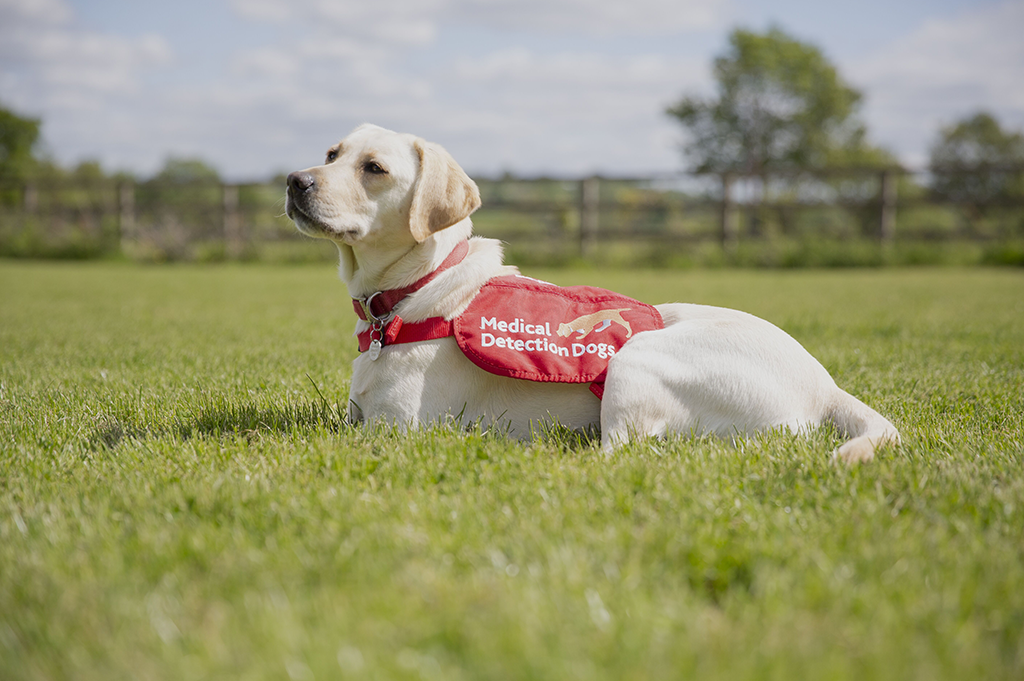
When looking for dogs to be part of the programme, Chris looks for dogs who have got a real work ethic. “There are dogs out there that you can throw the tennis ball throughout the whole day and they just won’t get bored of it. They’re the types of personalities that we want. We want them to say, ‘Ooh, let me go again! I like that challenge!’”
This is particularly important when they conduct blind tests, as even the handlers are unaware of which samples are live. “When we come to the end of the project, we come to the double-blind testing. Nobody knows where the samples are when we’re handling the dogs at that stage, so you’re relying on the dogs telling you which is a Covid sample.” For Chris, it’s all about confidence. “The dog is having to take control and not look for the handler to give them any reassurance.”
Giving the dogs the confidence to make decisions themselves is key to the training process. “Dogs are very tuned in to our body and will get to know the most subtle signals that we give. When testing, we’ve got to make sure the dogs don’t get any of those signals.” The trainers work behind one-way glass, so they can see the dogs, but the dogs can’t see the handler. “So when the dog does give an indication, it is purely the dog making the decision. You have got to have a confident dog who is happy to take the lead and make those decisions.
“That’s where you have to have the right type of personality. It’s about the search, it’s about the game. It’s self-rewarding to them.”
How close are we to knowing the viability of using dogs to detect COVID-19?
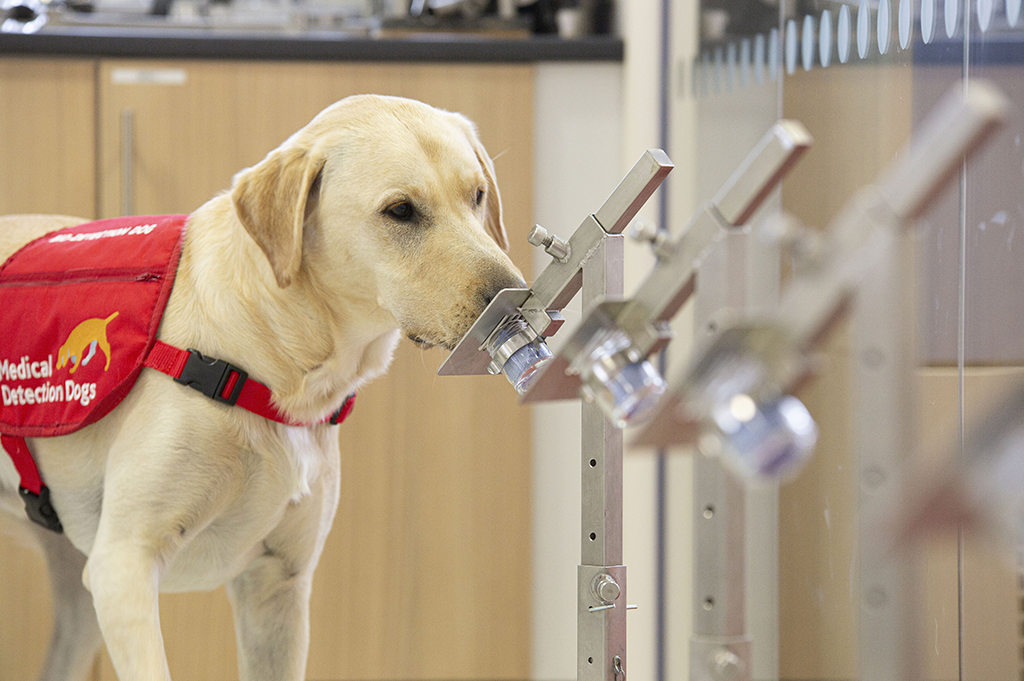
“We’re not too far away,” said Chris. But they’ve faced an unexpected problem. “The challenge at the moment is getting positive samples in. Which is a good challenge! It’s really good to see there’s not too many positive samples any more.”
The organisation receives samples from the London School of Hygiene and Tropical Medicine, who make sure that it’s safe to be used, then send it over to Medical Detection Dogs to be used in their training. “What’s good now is that anyone can help with this project. If you know of anyone who has been tested for COVID-19, you can contact the London School of Hygiene and Tropical Medicine. They can send you a kit for us to be able to collect samples live from that person.
“It’s an exciting time. We’re hoping to get the samples in within the next two to three weeks. We then estimate it’s going to be around six to eight weeks before we know whether the dogs can detect COVID-19.”
Where could the COVID-19 detection dogs be used?
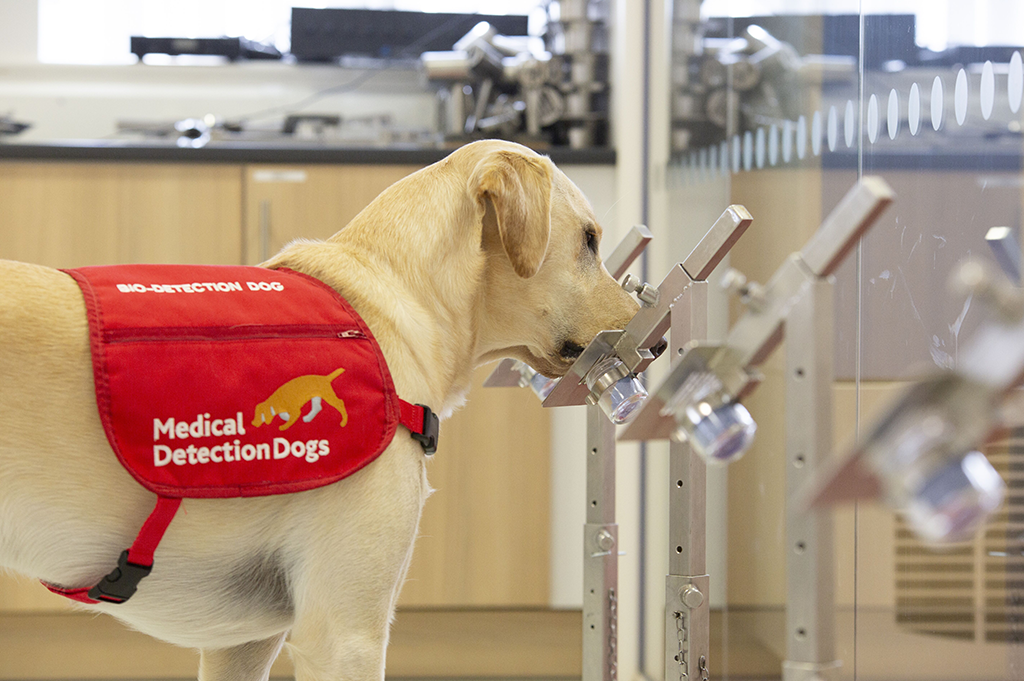
“Initially we’re thinking testing stations, it could be going into train stations, ferry ports, airports, that sort of scenario.” People are accustomed to seeing passive search dogs walked around environments like these, and they’re the kinds of places that Chris can see the detection dogs being used.
“So, scanning people when they are perhaps coming off an aeroplane or a train where we want to just scan the passengers as they walk through. It’s very subtle,” he explained. “A lot of the time you won’t know what’s happening. The dogs are working from a slight distance. They’re not jumping up at you or touching you. They’re very quietly walking around the crowd.” The dog can give an indication to the handler who, in turn, would let the professionals at the location know. They can then carry out a test.
It’s a constantly evolving process, too. “If you came to us in 12 months’ time, the work we’ll be doing then may be different to what we’re doing now. The project is evolving, every week there’s a new idea to consider. I’m sure this time next year, the dogs will be working in some different scenarios to what we’re thinking today!”
How can you help?
You can find everything you need to know about Medical Detection Dogs on their website! “If you do know of someone who is unfortunately diagnosed with COVID-19 then do think about getting a testing kit or a selection kit from the London School of Hygiene and Tropical Medicine and help us collect those positive samples that we urgently need.”
We also spoke to Chris about the selection and training process for Medical Detection Dogs. Find out all about the charity here! [Link to general MDD interview]
We’re proud to support such an incredible charity, providing insurance for their Bio Detection and Medical Alert Assistance Dogs. If a pup is part of your family, you might want to think about taking out insurance for your dog! The Insurance Emporium were awarded Pet Insurance Provider of the Year at the Moneyfacts Consumer Awards 2020, as well as Best Direct Pet Insurance Provider two years in a row at the Yourmoney.com Awards. You could even receive up to 30% discount* on your policy! Head on down to The Insurance Emporium to find out more.
* The 30% discount is made up of 20% Introductory Discount plus 10% Multi-pet Discount (if appropriate). The Introductory Discount is available for the first 12 premium payments on lunar and calendar monthly policies or one premium payment on annual policies.
All content provided on this blog is for informational purposes only. We make no representations as to the accuracy or completeness of any information on this site or found by following any link on this site. We will not be liable for any errors or omissions in this information nor for the availability of this information. We will not be liable for any loss, injury or damage arising from the display or use of this information. This policy is subject to change at any time.


